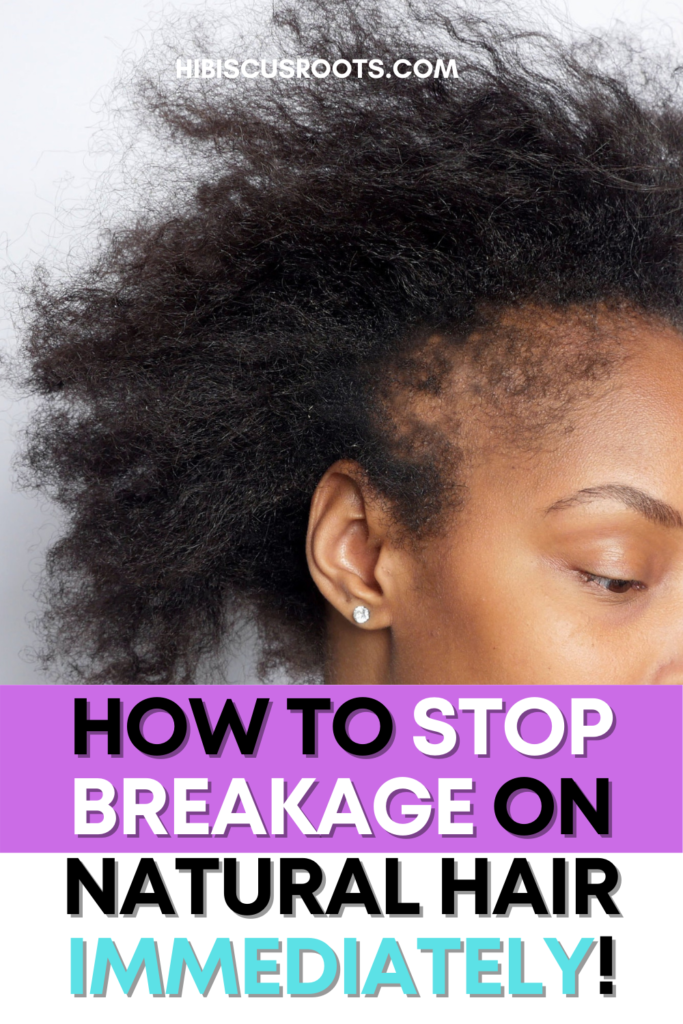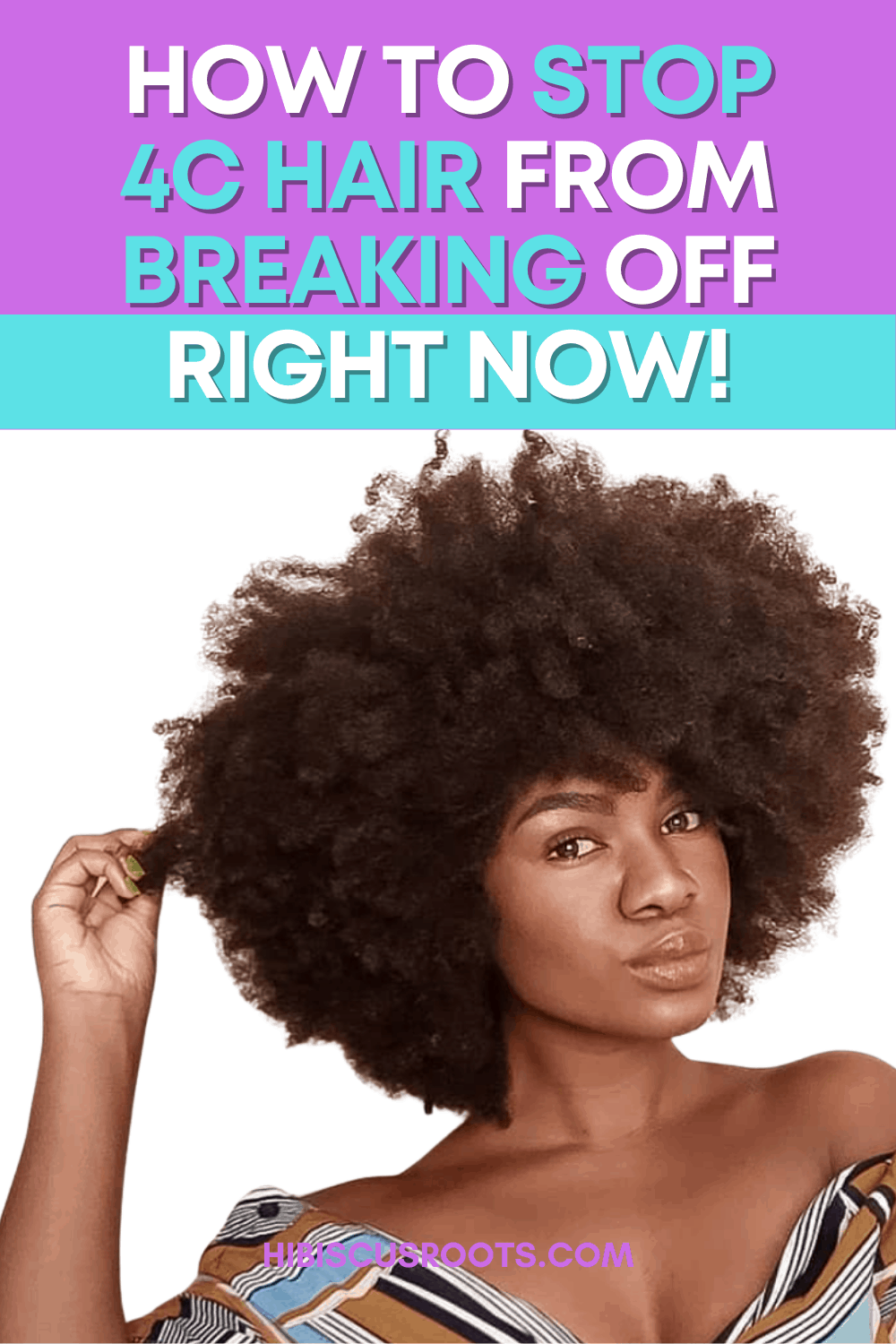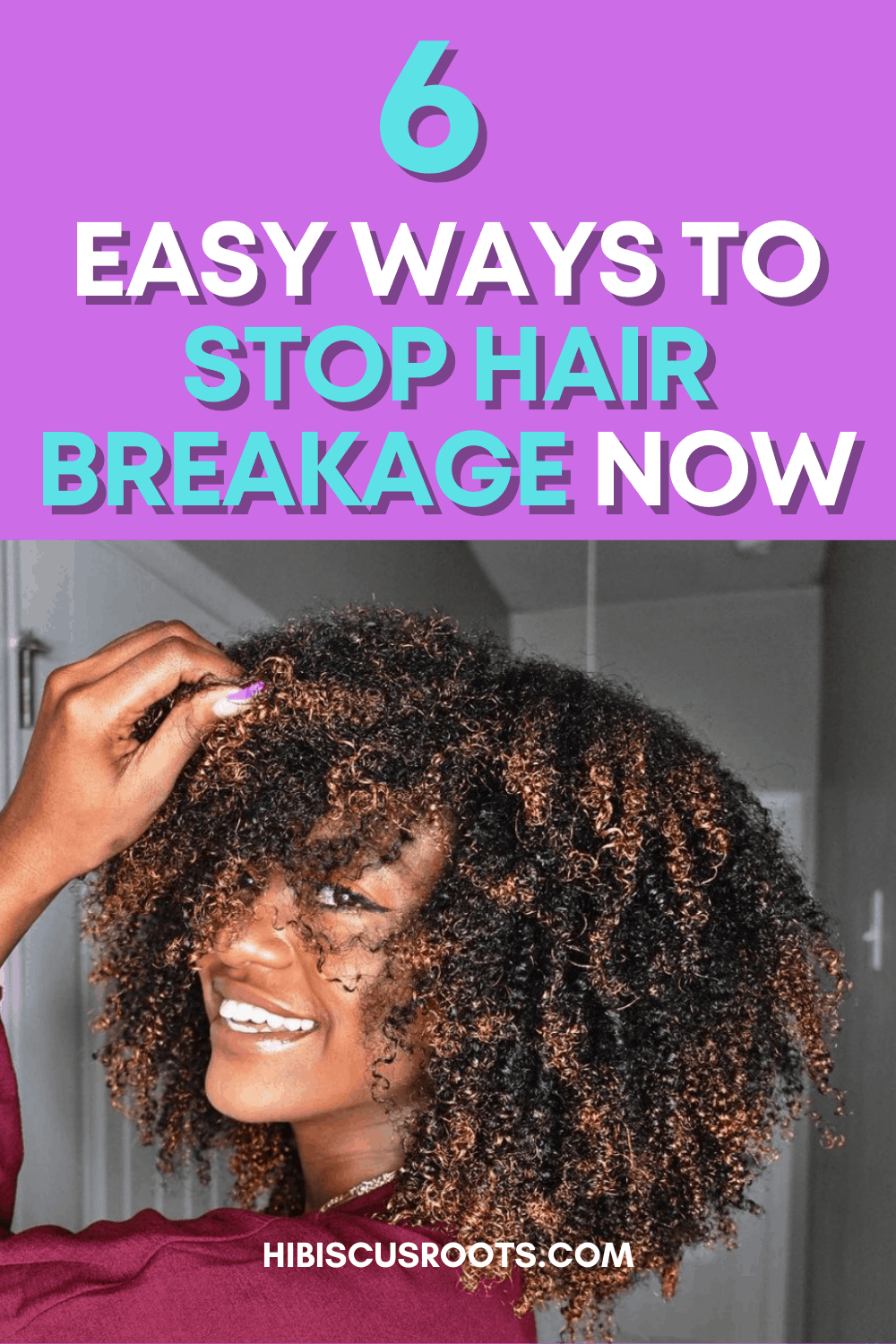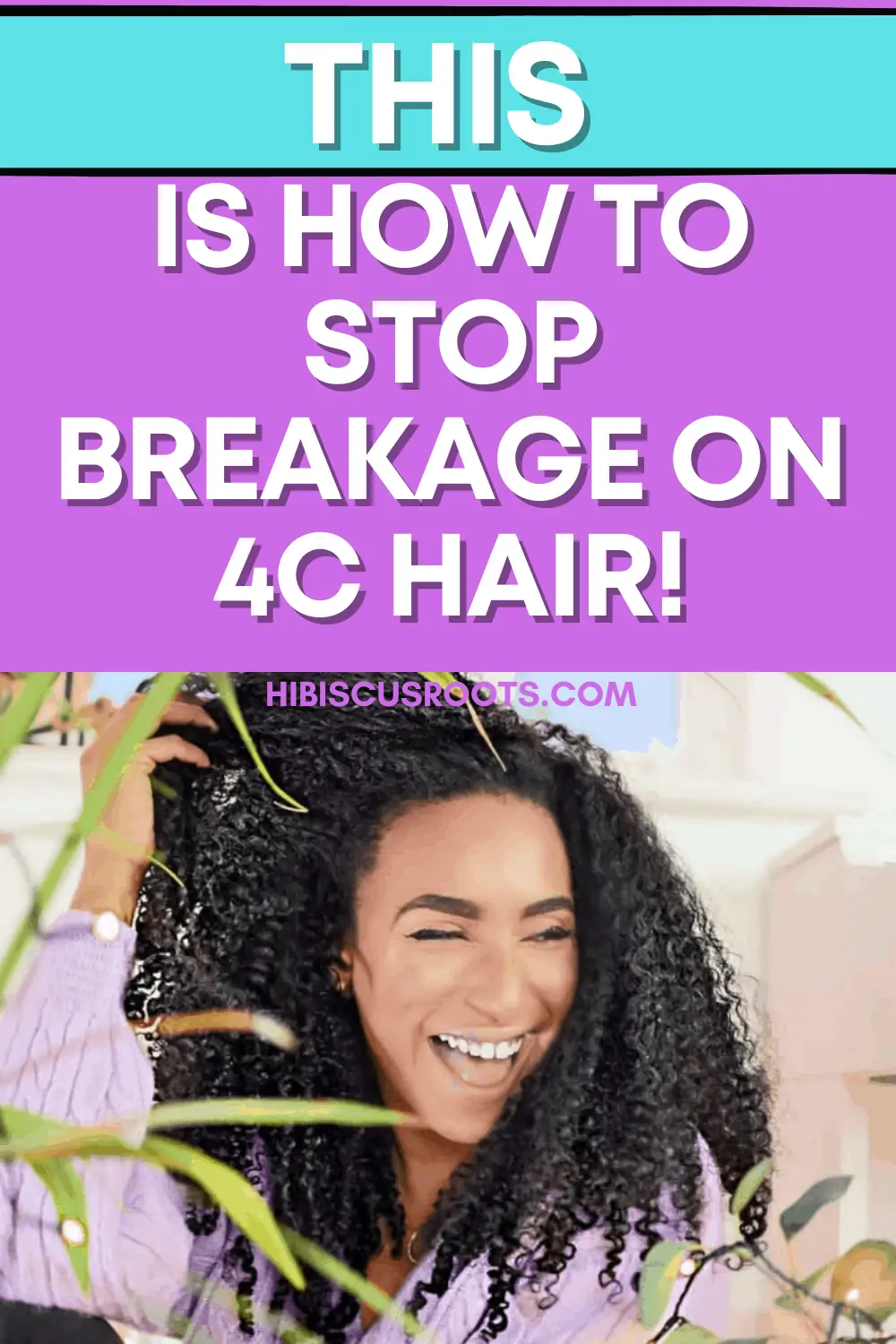
Today we’re going to be answering one of the biggest questions in 4C natural hair care: how to stop breakage! This is especially if you’re transitioning, newly natural, and are not used to caring for natural hair.
The main thing to keep in mind is “balance”. If your natural hair is out of balance for any reason, you’re going to experience breakage.
Keep reading! We’re about to get into concrete steps to stop your natural hair from breaking and encourage length retention (aka hair growth!).
What does Breakage Look Like on Natural Hair?
You can tell you are experiencing breakage in your natural hair if you notice shorter, awkward-length pieces around your hair. It can be especially obvious if you have one average length of hair and notice some shorter, jagged sections. You may also notice short pieces of hair in your sink or on the floor when you comb or even just touch your hair!
6 Easy Steps to Stop Breakage on 4C Natural Hair NOW!
Here are 6 easy steps to stop breakage and encourage length retention on natural hair:
1. Keep your natural hair clean
You can stop breakage on natural hair by making sure that it is thoroughly clean and free from product or mineral buildup.
This is because breakage can sometimes be a sign that your hair is having a hard time absorbing moisture or nutrients because it has a layer of old product on it. Your hair could quite literally be dehydrated and breaking off as a result.
The best way to prevent this is to ensure that you are regularly cleansing and chelating your natural hair (removing mineral buildup).
You can prevent mineral buildup in the first place by using a shower filter (we love this one from Walmart!) and you can check out our article here on how to wash natural hair properly to make sure you’re doing this right!
2. Keep your natural hair moisturised
Proper moisturization is a great way to stop breakage on your 4c natural hair. The best way to keep your natural hair moisturized is to deep condition regularly, moisturize often, and do hydrating treatments such as steaming.
How often you deep condition, moisturize, or steam your hair will depend on the rest of your regimen. The only strict advice we give is that you don’t wash your hair or do a strengthening treatment without following up with moisture.
You should also pay attention to your hair to tell when it’s getting dry before washday. If you notice this, moisturize your hair using the LOC or LCO methods with rich hydrating ingredients like Aloe Vera Juice, Avocado Oil, and Shea Butter. You can read about the benefits of each ingredient, and get DIY recipes here: aloe vera, avocado oil, shea butter.
We have also written extensive posts on the best way to deep condition natural hair here, how to moisturize stubbornly dry hair here, and how to steam natural hair at home here.
3. Keep your natural hair strengthened
A good way to prevent breakage is to strengthen your 4C natural hair regularly. This is because if you followed the step above to moisturize your hair more often, it will require balance.
To balance the moisture in your natural hair, strive to do protein treatments or strengthening herbal glosses on a regular basis.
This is because a lot of Ayurvedic herbs have strengthening properties. You can pick a favorite herb from our post here based on your goals and make a gloss with it. To make a herbal gloss, all you need is 1 tsp – 1tbsp of an Ayurvedic herb + 1 tbsp of your favorite oils + 1 cup of conditioner.
Add strengthening processes to your regimen to prevent the potential hair breakage or hygral fatigue that is caused by too much moisture in the hair. (see our article on hygral fatigue here)
4. Keep your natural hair organised
Another major way to stop your 4c natural hair from breaking is to keep it organized. This is because keeping your hair is a great way to avoid manipulation, tangling, and knots.
And as we know from our article on single-strand knots and split ends here, the less your hair tangles, the fewer knots you have. The fewer the knots, the lower the risk of breakage during detangling.
We also have a great article about how to detangle your hair without breakage here.
In order to keep your natural hair organized, we recommend reusing the parts and sections in your hair. When you divide your hair into sections to style it, try not to lose the parts so you can use them next time you style your hair.
Another great way to keep your hair organized and less prone to breakage is to keep it clumped. Clumping keeps the same principle as reusing parts. It involves, for example, unraveling your twists to form a twist out but leaving the hair in clumps rather than fluffing it out.
Keeping your hair in mini twists or braids without any added hair and styling it that way is another easy way to keep your natural hair organized and breakage-free.
5. Keep your natural hair protected
Another great way to stop breakage is to keep your 4C natural hair protected. By this, we mean physically shielding your hair from things that can break it off. Some things that can cause breakage include friction, combs, cotton, or other rough fabrics.
This is why in order to protect your natural hair, we most often recommend the use of silk and satin. You should use this material as scarves, scrunchies, bonnets, pillowcases, and even wear it as clothing to prevent natural hair breakage!
This is because silk and satin are less likely to absorb the moisture from your natural hair. Silk and satin also reduce friction — your hair will glide over this fabric rather than get caught and pulled in it. Finally, silk contains proteins that can help to preserve the protein in your hair. As you can see, this is why we can’t recommend this material enough. You can purchase this gorgeous satin pillowcase set at Walmart!
You can also protect your hair from breakage by either wearing protective hairstyles or low manipulation hairstyles.
Low manipulation hairstyles are those that don’t involve restyling or redoing the hair often. These include loose buns, chignons, twist-outs on short hair, etc. Protective hairstyles on the other hand are styles that keep the hair protected for long periods of time. These include braids, twists, crochet, cornrows & wigs.
You can check out our article here for more protective hairstyle inspiration.
6. Trim split, breaking ends
You can actually stop natural hair breakage in its tracks by trimming off traveling split ends. You can either do a general trim or use the search and destroy method to find and eliminate split ends in your hair.
This is because when you’re experiencing a lot of split ends, your hair can feel like it’s just falling everywhere. These may simply be signs that it’s time for you to trim your natural hair.
We have a full article about the best way to trim your natural hair yourself here.
How is Natural Hair Breakage Different from Shedding?
Breakage is caused by physical damage or an absence of balance in natural hair. However, shedding is part of the natural lifecycle of your hair strand. Shedding is natural because each hair strand is only supposed to live for a set amount of time (terminal length). Once this length of time has passed, the hair sheds directly from the follicle and you will see the white bulb or root still attached.
featured image: source







I love how clear and informative this article is! I will definitely be implementing these steps.
Thank you so much, Egiya! I really appreciate it 🙂